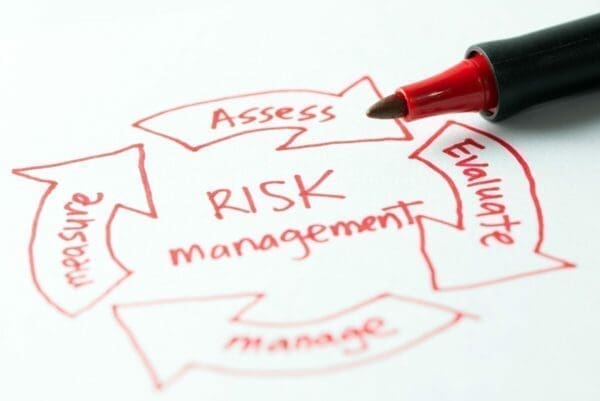Become the Best Visionary Leader
In recent times, leadership styles have evolved to adapt to the changing workplace and team dynamics. Visionary leadership, thought to be quite a recent concept, has existed throughout history. Very often, it simply went by a different term. Think of Alexander the Great. He is a great example of a visionary leader and certainly not a recent example.
To understand visionary leadership, we need to know what it is and what are key characteristics. We also need to look at the advantages and disadvantages of this style. Then we look at how to use it to our benefit and some examples of visionary leaders. Here we will look at all of these to create a better understanding of visionary leadership as a useful style to use.
Before we get started, remember that effective leaders can move between the different styles. Visionary leadership will be one of a collection of styles we choose depending on the situation.
What is Visionary Leadership?
Because of the name, the term visionary leadership can seem very daunting. In fact, what we are talking about are leaders who can see the big picture and get followers on board. They can see the direction the team or company can go in, what products and services they can provide, and how to get there.
Their road map, at times, can seem impossible or improbable to some. Often, visionaries can see what others can only dream about. For example, can you imagine the world now without our current electronic devices? Think back 20-30 years and how we communicated then. How would our workplaces have survived lockdown then, without our current technological capabilities?
So, visionary leadership can actually be used by all of us. It’s about forward-thinking. This style is also about setting long-term plans and goals. Additionally, this approach is about change and trying something different. You can change an existing product or service to make it different. Or, you can introduce something brand new.

Why is Visionary Leadership Important?
We have all had that leader in our lives who has been visionary in their approach. They see, before others, where the company could go. Then, they can communicate this really effectively and create buy-in. Also, they inspire others to make their vision a reality. When change is needed, visionary leadership is the way to go.
Remember, for us to be visionary leaders, we don’t need to have a vision that will change the world. Our thoughts or ideas may be visionary in terms of changing the team or company to achieve better success. Our vision can be life-changing for our staff or customers, and that’s enough.
These visionary leaders are game-changers. Think of your own company and some of the changes that have happened over the years. Think of the improvements you have seen and the new products and services that have been developed. Now imagine if these didn’t exist. Where would you be in terms of the competition? What would your market share be? How would you be seen as an employer of choice?
For all of these changes to happen, visionary leadership is needed. Progress and innovation cannot happen without them. Workplace improvements, such as equal rights and benefits, will not occur without someone with vision. We need the visionaries, along with other leadership types, to make things happen. Otherwise, we risk being left behind and getting stuck in our old ways.

Key Characteristics
Visionary leaders have some key characteristics that they display when using this style. Here we will look at 7 key characteristics or qualities they need to have.
Sticky Learning ® is 7 times more effective than 1-day training courses. Plus, you will get a Chain of Evidence proving your Return on Investment. Discover soft skills training that changes behaviours long term.

Communication
Visionary leaders are great communicators. They use this skill very effectively to explain their vision and ideas. Visionaries can often wow a crowd with their speeches. These leaders are able to create a clear picture of their ideas and get others to believe in them. How do they do this? They are often naturally charming; their charisma rubs off on others. This flows through their communication and sets the tone for what is to come.
Collaboration
Visionary leaders know what they want to achieve. However, they include others in the how. They are ready to have the team come up with the idea of how to achieve the vision. As they want to get these amazing ideas happening, they will work alongside the team to get it done. Collaboration is important for them to maintain team harmony and forward movement.
Risk-taking
Visionary leadership is about doing new things or doing things differently. Because their ideas are a bit “out there”, they can be seen as risky. They understand that risk is part of the experience. That doesn’t frighten them off, instead, it can drive them forward.

Organised
Visionary leaders are usually well organised. Because their vision is so clear, they know what they want as the end result. By gathering the right team around them, they can make it happen. The processes will be very focused to achieve the end result of their vision. Also, they will have planned effectively for success. Their strategy will be in place and followed by all who believe in the vision.
Inspirational
Their communication approach inspires others. Their team or followers have a true belief in what is trying to be achieved. They will follow their visionary leader wherever they are going. This inspiration helps to create other leaders and more visionaries.
Innovation
Because of the risk-taking element of this style, innovation and creativity are a must. Visionaries are not known for just following the herd. They are visionaries because they do think about “what if” and “how about trying”.
Passion
Visionary leaders drive their vision forward with passion and enthusiasm. The team is motivated and excited about being a part of the journey. They can see a brighter future as a result of their idea. This then passes throughout the team to create a highly positive and passionate environment. With this approach, surely success is the only possible outcome.
Advantages of Visionary Leadership
Like other styles we use, the visionary leadership style has a number of advantages. The advantages of this particular style include:
Overcoming Obstacles
Visionary leaders not only see where they want to go but also what might stop them from getting there. As a result, these leaders plan for these possible obstacles in advance. They can see possible pitfalls and how to avoid them. This can be a great advantage for reaching the end result without too much hassle.
Of course, not all barriers can be planned for. This will not stop visionaries. These leaders are able to visualise many of them and prepare the team ahead of time. This avoids delays and demotivation from creeping in.

Leading Strong Teams
In order to achieve their goals, visionary leaders will want the best of the best. They look for those with the right knowledge, skills, and experience. This isn’t the time for new recruits and novices. It is about bringing experts together to achieve the ultimate goal.
The people they have to make their vision a reality have great individual strengths that make an amazing team. These leaders are great at talent spotting and bringing highly skilled people together.
Creating Clear Goals
Another advantage of visionary leadership is the ability to create clear direction. Goal setting is very important for this style. They know what they want to achieve and assemble the team to make it happen. Therefore, everyone working on the project knows where they are heading. This helps maintain focus and structure in the team dynamic.
Every part of the enterprise has its role to play. They understand their contribution. Having clear goals can be very motivating for the team, especially as they see how they are progressing towards the end result. Each milestone will create a burst of energy to push the team forward to the next stage.
Change for a Reason
Have you been faced with a new boss that only wants their ideas implemented? You know the “leader” I’m talking about. They are new to the company or role and want to change things just to have their way. It’s not about improvement, it‘s about throwing their weight around. They want to show everyone who is the boss. And they expect everyone to fall into line, without question.
Visionary leaders want change to make improvements rather than just for the sake of it. True visionaries want to change for a specific reason. Their ideas are usually about making things better. There is a reason and benefit to the change they want to see happen. That’s why their followers accept their vision.
Disadvantages of This Style
Just as there are many advantages to this style, there are also disadvantages. We need to be aware of these so we can avoid falling into the trap of having these happen. When we use this style, we combine it with other styles to get a better outcome. This will help reduce the number of disadvantages.

Loss of Momentum
Visionary leadership has the downfall of their leaders becoming bored easily. If this happens, the momentum driving the team towards the end result will wane. What might happen is that ideas are generated but never fulfilled. Another example is that they might jump from idea to idea, never settling on one to properly develop.
When this occurs, the team then loses focus and motivation. The actual vision may never become a reality. Then, these leaders may have trouble having their vision listened to in the future.
Short-Term Goals Ignored
Because visionaries have a great idea of the big picture, they can focus on long-term goals. This can lead to them neglecting more achievable short-term goals as a result. All companies need to be able to find the balance between both to achieve success.
Ideas Rather Than Execution
Visionaries are known for their amazing ideas and foresight. They are recognised for their forward-thinking initiatives. However, they don’t always receive the same recognition for the actual execution of the ideas.
Lack of Continuous Individual Development
We mentioned earlier that a strength visionary leaders have is to identify talent. They group great talent together to make their vision happen. Unfortunately, one downside of these visionaries can be their lack of continuous development of the individuals in their team. As they have selected the best, they expect them to remain the best. This is not always the case.
Without providing development opportunities, these individuals may fall behind in terms of what the competition is achieving. They may have been at the top of their field but they may not remain there without help. Visionary leaders often forget to focus on this area of continuous improvement of the very talent they sourced. They may expect self-development. Or they might even overlook further development as a necessity. This can be demotivating and can cause some individuals to look for other opportunities.
Using Visionary Leadership Today
Nowadays, visionary leadership has taken on a slightly different meaning. In today’s work climate, leaders need to be able to adapt to the ever-changing environment we are faced with. This is where visionary leadership will be important to your company.

As lockdown eases and the world reopens, there needs to be an element of vision in our approach. We need to be able to see how our company can move forward after such restrictions we all faced. Companies need to be able to stand out from the competition by doing something different. This is where leaders with vision will be needed.
Some examples of famous visionary leaders include Nelson Mandela, Marie Curie, Mahatma Gandhi, Henry Ford, and Walt Disney. More recent examples are Elon Musk, Richard Branson, Oprah Winfrey, and Marc Benioff.
These leaders have used visionary leadership at some time in their lives. They have all had visions of what the world or their company should look like and have made that happen. Of course, none of them can do it alone. They have surrounded themselves with the right people to make it happen.
Conclusion
Nowadays, business visionary leaders need something else. They need to be able to show that their vision includes global considerations. This can be anything from addressing climate change to narrowing the gaps in terms of inequality in the workforce. These leaders are also expected to consider diversity, community improvements, and environmental impacts. They need to expand their horizons beyond mere product placement or financial success.
These are a lot of different areas for a leader to have to consider. But it can be done.
Remember, when using this style follow these simple points. First, you need to surround yourself with a strong team, while continuing to develop them. Next, you should include short- and long-term goals in your vision. Third, be sure to recognise the input of others. Also, you have to maintain the momentum without losing focus or leaving goals unachieved. And finally, remember to move between styles to keep an even balance to your approach.
Action: For even more useful content on leadership, check out our ultimate guide on Leadership Skills.




